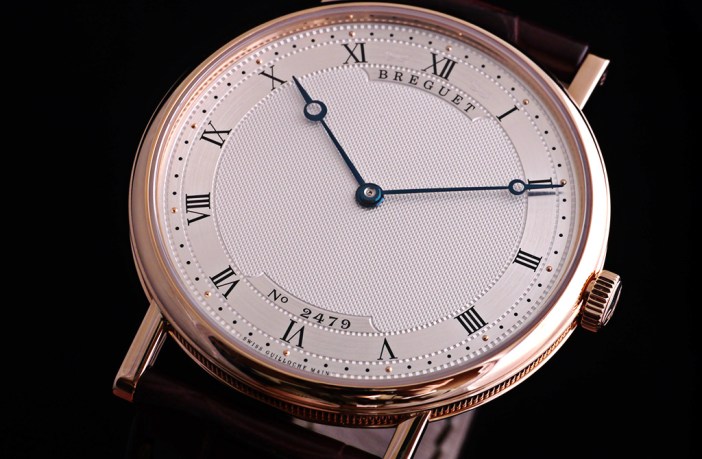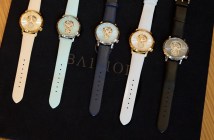Breguet is one of the most inventive and innovative classical watch brands in the market today. With its wide product offering, the brand boasts both high-complication timepieces with a hybrid modern twist and simple, elegant time-only watches. The watch that we will examine today is from the latter group, but bears elements quintessential to the brand’s design.

The Breguet Classique 5157 in yellow gold.
The case and dial
The extra-thin Classique is as Breguet as Breguet gets. It bears the combination of the famous rose engine turned guilloche dial and heated blue Breguet hands. Cased in 18-K yellow gold, the watch measures 38 mm in diameter and 5.4 mm in height. The slim profile of the watch makes it aptly as its name suggests a Classique; simple and elegant altogether. Apart from the thinness of the movement, the watch has a reduced hand-stack without the seconds hand.

The watch case bears a fluted case band and welded straight lugs.
The Breguet 5157 uses a silver plated gold dial which is hand-engraved on a rose engine. Roman numerals are used as hour markers, while a periphery dot design is used for the minutes marker. Given the additional rings on the dial, an illusion of spaciousness is created, despite the relatively small case size of 38 mm.

The guilloche on the dial are carved using the same tools from more than a century ago, like the famous rose engine.
Printed on the dial are other fine details, like an individual number for each timepiece, making each piece a ‘uniquely’ identifiable watch. Other elements like segmented chapter rings and machine tooled borders bring the dial to live.

The open caseback reveals an off-center movement with a 18K gold rotor.
The movement
Turn the watch over and you will see a sapphire case back housing the 502.3 caliber. The self-winding movement beats at a frequency of 3Hz, and uses a silicon balance spring and an inverted straight-line lever. The silicon balance spring is ideal for its anti-magnetic qualities. Based on the original off-centered movement by Frédéric Piguet, the Breguet caliber has its roots dating back to 1967 when the patent for Caliber 70, which was the world’s thinnest automatic caliber with center rotor at the time was filed.
A video of the watch by Breguet
Concluding thoughts
The Breguet Classique 5157 represents some of the best of Breguet. It is an ideal daily wearer with its self-winding movement, a step up from the other manual-winding ultra thin watches offered by competitors in this price range. A quick survey will see options like the Saxonia thin by Lange and the Vacheron Constantin ultra-thin Historiques; both of which 2 handed time-only watches.
Among the three, each piece has varying pros and cons relative to each other, the Lange is the least expensive of the three at US$14,800 and possesses possibly the best looking hand-finished movement. The hand-winding movement holds 72 hours of power reserve and the watch measures 5.9 mm thick.

The Lange Saxonia thin in pink gold.

Caseback featuring the German three-quarter plate movement.
The Vacheron Constantin is the thinnest and most expensive of the three, priced at US$29,600. At 4.1 mm, the Les Historiques 1955 held the record holder for the thinnest mechanical watch in the world, up till 2015. Its movement is made with gold and is finished to Geneve seal standards.
The Vacheron Constantin 1955 Historiques ultra thin.
Now comes Breguet, priced and sized between the 2, at US$22,000 and 5.4 mm. While its movement finishing scores less compared to the other two watches, it has arguably the most worked on dial among the three. And if the intended use of the watch is for daily wear, then the automatic movement will be for most users, a significant convenience.





